Last week we unravelled the complicated lead up to the Dongfeng-Nissan joint venture (DFL). Now it’s time to see how DFL developed since 2003 and what products it makes. It’s the largest enterprise of Dongfeng and one the bigger joint ventures in the country. We also take a look at the fortunes of Yulon, Nissan’s Taiwanese partner, in the Chinese market.
Dongfeng Nissan Passenger Vehicles
DFL had a promising start in the market. The company took control of Yunbao/Fengshen and the Bluebird model in production. The car did quite well and DFL soon added the smaller Sunny model to the line-up. But the honeymoon period lasted less than a year. In late 2004, DFL general manager Ren Yong became worried about the growing stock of Bluebirds and Sunny’s in the company’s warehouses. The situation became so bad that DFL halted production for an entire month. In January 2005, Ren called a meeting of all important managers to explore why Nissan had lost contact with the market so quickly.

Nissan Bluebird (2003) 
Nissan Bluebird Sylphy (2007) 
Nissan Sylphy (2009) 
Nissan Sylphy (2012) 
Nissan Sylphy Classic (2019) 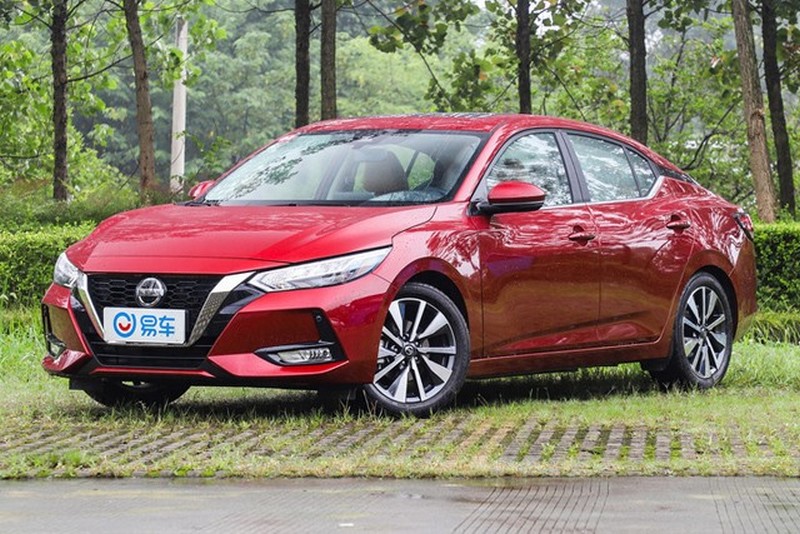
Nissan Sylphy (2019) 
Nissan Qashqai (2008) 
Nissan Qashqai (2015) 
Nissan Qashqai (2022) 
Nissan Teana (2005) 
Nissan Teana (2008) 
Nissan Teana (2013)
In a ten-month investigation Ren ruthlessly exposed the fundamental problems in the company. Japanese managers had taken control of the marketing side, pushing the Chinese out of the way. The Japanese however lacked proper understanding of the market. At the same time the Chinese controlled the production side, relying on their well-known practices and not implementing the advantages of the Nissan system. This resulted in product quality below expectation for a joint venture brand.
Ren Yong wrote a long corporate strategy, called the Dongfeng Nissan action program, which meticulously detailed the proper way forward. The program entailed redistribution of responsibilities, a big investment in the sales channel, rapid improvement in production quality and the introduction of more competitive products. The Teana was added as mid to high-end model, the Sylphy replaced the Sunny and the Bluebird was discontinued in favour of the Qashqai. Nissan also kept a foothold in the lower end of the market with the March, Tiida and Sunny models.
The program indeed had its desired effect. From 2006 on Nissan began a steady ascend of the Chinese market. Even the global economic crisis in 2008 couldn’t stop the sales growth. The Teana did wonders for the brand image, the Qashqai opened the floodgates on the current compact-SUV craze, but the Sylphy returned the most unexpected result. For quite a few years now the Sylphy and the Volkswagen Lavida battle it out for most popular (meaning best-selling) car of the country.
Nissan Passenger Vehicle is a division of DFL, not a separate company. In contrast, when Nissan brought its high-end brand Infiniti to the Chinese market in 2014, it established Dongfeng Infiniti Automobile as wholly owned subsidiary of DFL. Infiniti models are mostly imported, but both the Q50 sedan and QX50 SUV are locally assembled. The 7-seater QX60 is being added this year. Nissan introduced the world’s only variable compression combustion engine on the QX50-model for the Chinese market in 2018 and it found its way to some Nissan models as well.
In December 2021 Nissan announced that Infiniti will be merged into Nissan Passenger Vehicles. That means the Dongfeng Infiniti company will cease to exist. It’s similar to what happened to Nissan’s other brand, I want to talk about next, Venucia.
The real ‘fake brand’
In the early 2010s several Sino-foreign joint ventures introduced self-owned brands to convince the government into thinking the foreign company was actually transferring technology. I did a story about it earlier, in which I mentioned two exceptions. One of them was DFL’s new self-owned brand, Venucia (Qichen in Chinese). The brand aimed at the lower end of the mainstream market.
Venucia was announced in September 2010, with the first product launched in April 2012. This was the D50 sedan, based on the Nissan Tiida. The R50 hatchback model followed later in the year. These cars were very real, for sale and became reasonably successful, setting the Venucia apart from all the fake brands in the aforementioned article. Venucia also entered the New Energy Vehicle market, a first for DFL. In 2013 and 2014 small numbers of imported Nissan Leafs were sold as Venucia Morning Wind (Chenfeng), locally manufactured cars thereafter were known as Venucia E30.

Venucia Chenfeng/E30 
Venucia e30 
Venucia R30 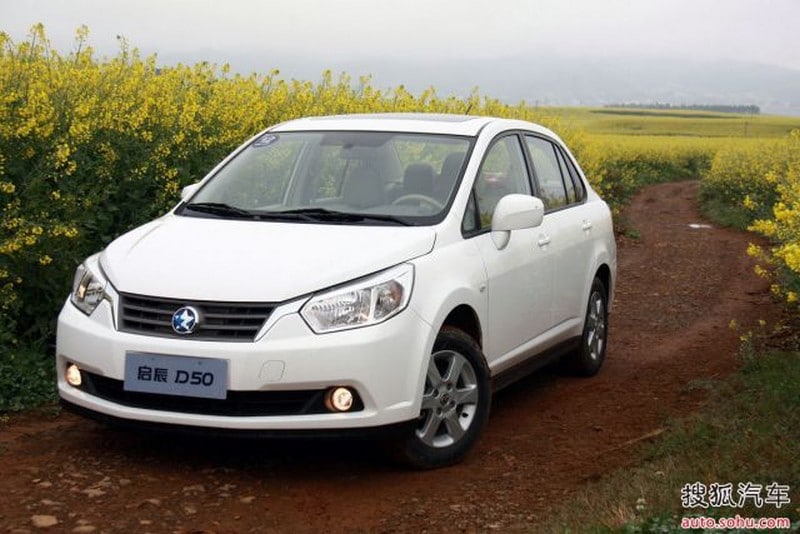
Venucia D50 
Venucia R50 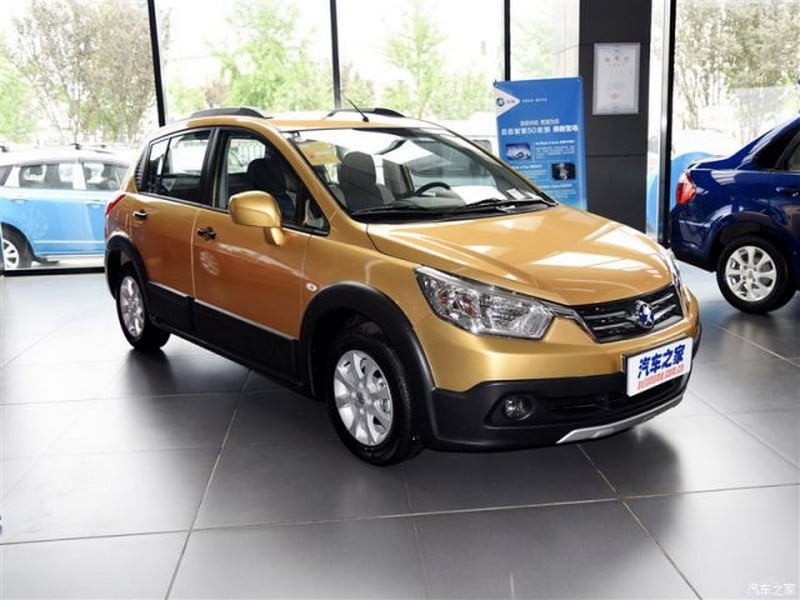
Venucia R50X 
Venucia M50V (Sokon-based) 
Venucia D60 
Venucia T60 
Venucia T70 
Venucia T90
Next up were two SUVs, the Qashqai-based T70 and the Murano-based T90. And the, we’re in February of 2017 already, DFL spun off Venucia as wholly owned subsidiary (Dongfeng Venucia Automobile). To celebrate the occasion, Venucia immediately launched its first non-Nissan model, the M50V. This car was a compact MPV and just a rebadged Dongfeng-Sokon car (more about that brand next week). Later that year Venucia was back on the Nissan bandwagon, when it introduced its own version of the Sylphy, the D60 sedan.
Still in its independance period Venucia added the T60 (Nissan Kicks) and replaced the E30 with the e30. The latter is a rebadged Renault eNuo, the small BEV produced under several Dongfeng brands. The latest Venucia cars are built on the brands own VSA-platform. This is closely related to the Nissan-Renault CMF-platform, but re-engineered to make easier use of Nissan technology. The Star (Xing) sporty crossover and the Grand V SUV are on this platform.
Since December 2020 Venucia is back under Nissan’s roof again. Apparently the separate company didn’t deliver what was expectd and now Venucia is once again a division of Nissan Passenger Vehicles. While most of the ‘fake brands’ from the intro never really sold significant numbers of cars, Venucia was quite successful for many years. However the last two years have been difficult, but more recently the downward trend has been broken. The Star and Grand V seem to connect with the Chinese car buyer again.
Dongfeng Automobile Co., Ltd.
As you remember, Dongfeng started out in a rural China, far away from any of the big cities. In the mid-1980s the company first expanded into a more populated area, the city of Xiangyang (still in Hubei province). In the following years Dongfeng built quite an industrial complex in the city, with several assembly factories, an engine plant and component factories. Also the first Citroens were assembled in Xiangyang.
In 1999 Dongfeng spun off several of the factories into a new subsidiary company called Dongfeng Automobile (DFAC). Dongfeng held 70% ownership, but listed 30% of the shares on the Shanghai stock exchange. DFAC’s main line of products included commercial vehicles, special purpose vehicles and buses. When Dongfeng-Nissan was formed in 2003, the 70% ownership of Dongfeng was transferred to the new joint venture.
DFAC still makes commercial vehicles under the Dongfeng or DFAC brand. The company specializes in medium trucks and buses. Under Yufeng sub-brand it also makes a series of light commercial vehicles. The Yufeng P16 is a pickup based on a Foday model and the S16 is the SUV-model on the same technical base.
More interesting is a van simply called Yufeng. This car has been around since 2012. According to DFAC the Yufeng van is an independently designed car, but in reality it has lots of borrowed technology. In 2006 DFAC made a failed attempt to acquire some intellectual property from British van maker LDV. When the deal fell through, DFAC simply imported a number of cars and started its ‘independent research’. The Yufeng van is the result. Of course, SAIC gained possession of all intellectual property of the then defunct LDV company in 2011 and turned it into its Maxus brand. SAIC openly accused Dongfeng of copying practices, but I don’t think it ever came to a court case. The Dongfeng Yufeng and Maxus V80 are direct competitors and technically similar since 2012.
Zhengzhou Nissan Automobile Co., Ltd.
The third and final pillar of DFL is Zhengzhou Nissan. This is the joint venture from the early nineties, that produced the Navara pickup and Paladin SUV. After Nissan and Dongfeng form their joint venture, Zhengzhou Nissan is placed under control of DFAC, with both DFMG and Nissan having minority shareholdings. In 2017 the company becomes a wholly owned subsidiary of DFL.
In the early years Zhengzhou Nissan exclusively produced Nissan-badged cars After its inclusion into DFL it doesn’t take long before Dongfeng products follow. The Navara pickup gets a domestic sister called Dongfeng Ruiqi (Rich) and the Paladin becomes Aoding (Oting). All cars are based on the D22-series Navarra. Zhengzhou Nissan also adds the Serena MPV to the line-up, which spins off two Dongfeng models, the Yuxuan (Yumsum) and Shuaike (Succe).
The D22 Navarra/Ruiqi hold out for a long time and become one of the more recognized offerings in the pickup segment. Only in 2018 the series upgrades to the D23-model, which was introduced in the international markets four years earlier. Dongfeng names its version Ruiqi 6, to distinguish it from the older model that remains in production. At the same time in the SUV lineup the Nissan Terra replaces the Paladin. Over at Dongfeng, where the Aoding has long been replaced by a model under the Ruiqi banner, the same car appears as Palasuo (Palazzo).
Zhengzhou Nissan also has a short foray in passenger cars under the Dongfeng Fengdu brand. When the production of the second generation Nissan X-Trail (T31) ends in 2014, the production line is transferred to Zhengzhou Nissan. A reworked version of the car re-launches in March 2015 as Fengdu MX6. With the Fengdu brand Dongfeng aims to offer a lower cost alternative to its Fengshen brand. The MX6 sells quite well and two years later is joined by the MX5. This is a slightly updated version of the outgoing first generation Fengshen AX7.
So the first two cars are continuations of older models, but in 2017 Fengdu shows its first contemporary car. This MX3 is another rebadged Fengshen, the AX3, that was launched only the year before. The MX3 never makes it to production however. In mid 2018 reorganises its passenger car lineup. Fengshen (DFMG) becomes Aeolus, Fengxing (Dongfeng Liuzhou) becomes Forthing and Fengguang (Dongfeng Sokon) becomes Fengon. It decides that there is no longer room for Fengdu, as the segment is well-covered by its other brands. After just over three years the Fengdu brand is retired again.

Fengdu MX3 
Fengdu MX5 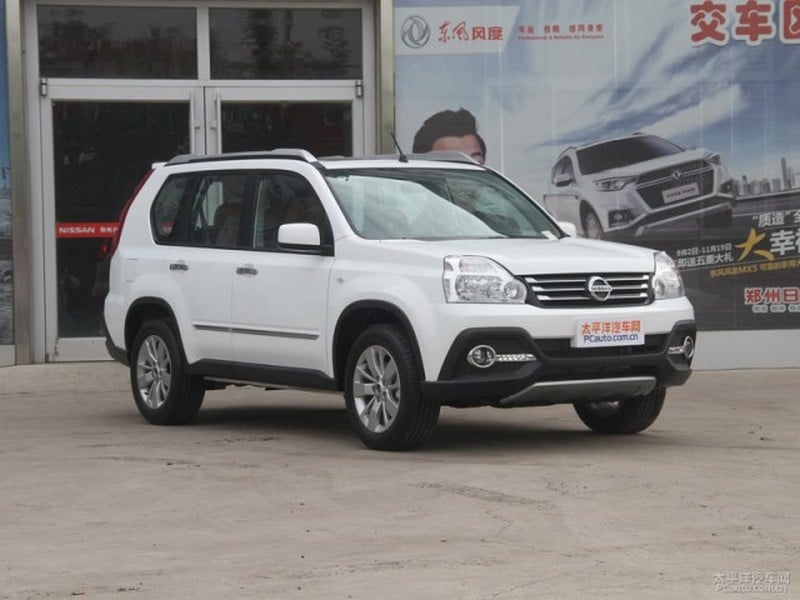
Fengdu MX6
An aside: Dongfeng Nengdi
Dongfeng and Nissan have another relationship besides DFL. I’ll keep it short, because it’s about trucks and buses again. In the 1930’s Nihon Diesel is established in Japan, making diesel engines. In 1960 it is acquired by Nissan and becomes Nissan Diesel. Besides engines, it also starts making complete trucks and buses. In 1996 Dongfeng Motor Company and Nissan Diesel set up a joint venture in Hangzhou city. Dongfeng Nissan Diesel was mainly an assembly plant for heavy duty truck chassis, but also produced some Nissan Diesel trucks.
In 2007 Nissan Diesel was acquired by Volvo Trucks and UD Trucks became the official brand name. In 2013 Dongfeng renewed its technical cooperation with Volvo, on which the joint venture name changed to Dongvo (Hangzhou) Trucks. This didn’t last long. In 2016 Volvo sold all its shares back to Dongfeng. The joint venture, now a subsidiary of DFMG, was renamed Dongfeng Nengdi (Hangzhou) Motors and became a supporting factory to the larger commercial vehicles group. Volvo trucks offloaded UD Trucks to Isuzu in 2021.
The return of Yulon
Yulon was a catalyst to Nissan’s involvement in China, but its role ended with the founding of DFL in 2003. Through China Motors, Yulon’s sister company, the Taiwanese remained active on the mainland, because of a joint venture with Fujian Motors. The main brand however had bigger ambitions that included, like its Chinese counterparts, a self-owned brand.
In 1986 Yulon already made the Yue Loog Feeling, a self-developed car based on the Nissan Stanza. In a push to become a global car company the Feeling was exported as far as Europe, but it became a failure. Too expensive for an unknown brand and the quality was disappointing. The Feeling had a short career in China as well. Yulon approached Nanjing Yuejin for local production, but the truck maker wasn’t interested and lacked the infrastructure for production. Some Yulon executives smuggled the entire production line and molds of the Datsun Sunny to the mainland, but Yuejin still wasn’t interested. The equipment ended up with Hafei Automobile, that (illegally) produced small numbers of the car.
After that Yulon gave up on its own brand for while and diversified its line-up in Taiwan (adding Renault and some GM brands to their local assembly). But in the 2000s the company founded its own R&D department and established two new brands: Luxgen in 2008 and Tobe in 2009. We can be short about Tobe. The brand took the Geely Panda and produced it as Tobe M-car for the Taiwanese market. It wasn’t a success and Tobe disappeared again a few years later.
Luxgen aimed at the higher end of the market. It introduced a large MPV and SUV on its home market in 2009 and then established a joint venture with DFMG in December 2010 for Chinese production. The same M7 and U7 models rolled off the assembly line in Hangzhou in the middle of 2011. Luxgen’s market introduction came at a time when there seemed to be a new brand every week, but the market response was reasonably good.
It was at least good enough for Yulon to push on with a complete line of new cars. In the next years it deployed the S5 (sedan) and U6 (SUV) in the mid-size segment and the S3 (sedan) and U5 (SUV) in the compact class. Sales rose to a peak of 60.000 units in 2015, the next was still good, but then followed a steep decline. The Chinese marketed was saturated with many brands and the government started to push for more eco-friendly cars. The Luxgen engines, turbo-charged inline 4 cylinders, were notorious for their high fuel consumption.
Sales dropped to less than 2.000 cars in 2019. Luxgen tried to get out of the downward spiral with the introduction of the all-new URX SUV late that year. Unfortunately, it didn’t help. When the brand sold less than 100 cars in the first half of 2020 (not helped by the Covid-pandemic, of course), the Taiwanese threw the towel. The joint venture and its sales subsidiary went into bankruptcy proceedings and after a lengthy process, it was liquidated. Dongfeng acquired the factory. Of course, Luxgen remains on sale in Taiwan.
As Yulon’s presence in the Chinese market was only temporary, so might be its retreat from it. Before ending its cooperation with Dongfeng, Yulon already put a back-up plan in motion. In Taiwan it established a new joint venture with Hon Hai Precision Technology, that we know as Foxconn. In November 2021 Foxconn and Yulon jointly presented the new Foxtron brand and one year later they showed three prototypes, two passenger cars and a bus. The cars will enter production in 2023, most likely under the Luxgen brand. It’s entirely conceivable that Luxgen or Foxtron will one day return to the mainland.
In two weeks
In the final instalment on Dongfeng, we explore ‘the odd one out’ or the Group’s only domestic joint venture with Sokon Industry.
Read more Automakers Stories
Every week we publish one exiting article about history of famous Chinese Automakers. Check the ones you haven’t read yet.
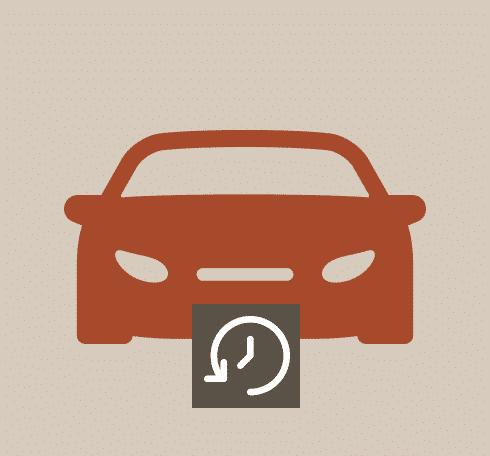







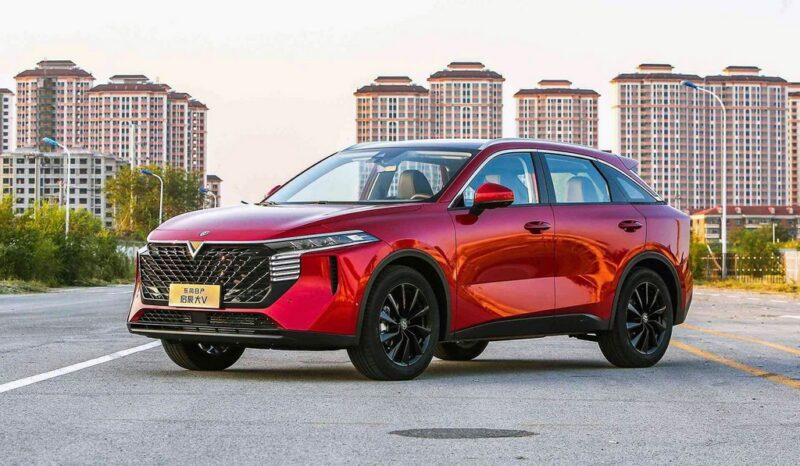
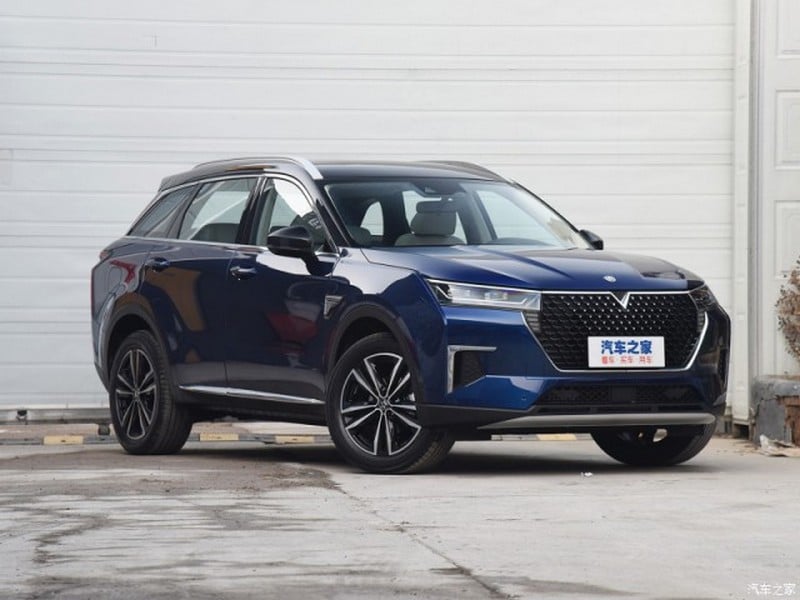





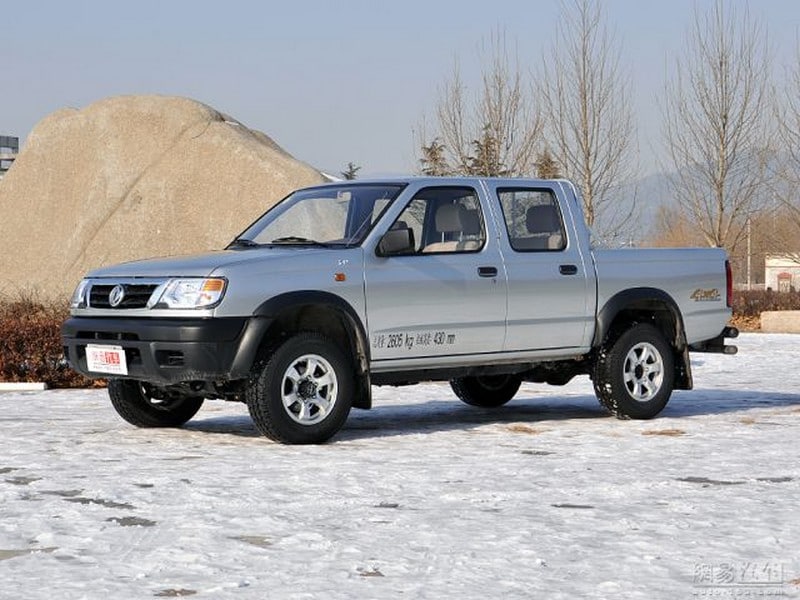

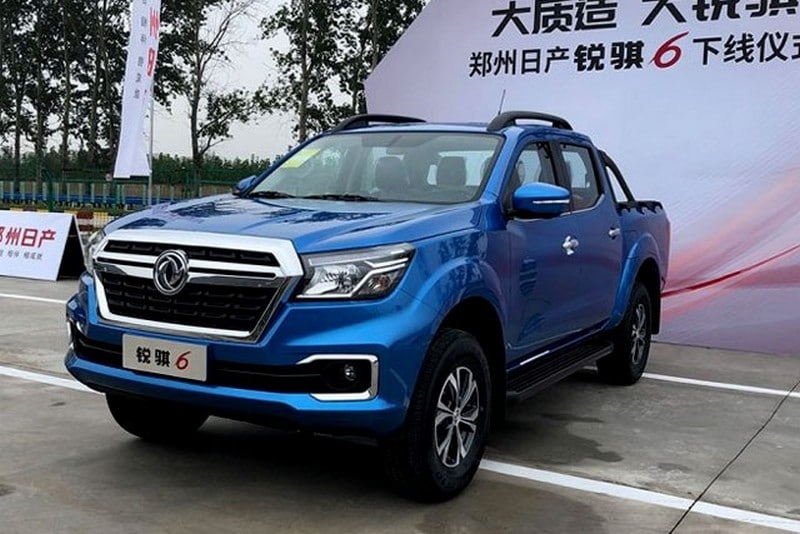







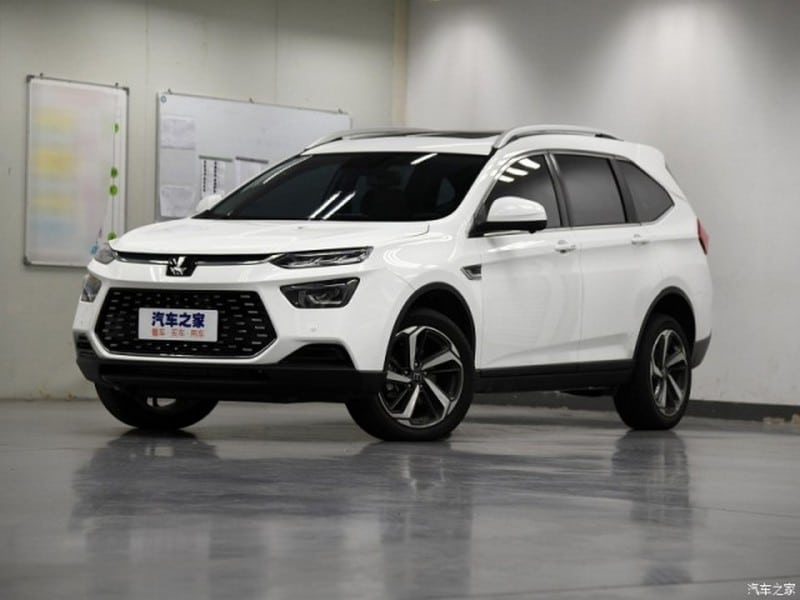






Thanks to the author of the article! I have always been interested in the history of the development of the automotive industry in China.
In absolute numbers, the Chinese market is almost incomprehensible large yet even to Chinese standards, the fragmentation of auto brands / car manufactures seems stupendous.
As to the Nissan Sylphy, that model topped the Chinese bestselling list for 3 years in a row, with up to 500.000 units and more in a single year. Only the Ford F-150 dominates a country with an even higher volume (700.000)
There are definitely quite a lot of particulars like that to take into consideration. That is a nice point to deliver up. I offer the ideas above as common inspiration however clearly there are questions just like the one you deliver up where crucial factor will probably be working in trustworthy good faith. I don?t know if greatest practices have emerged around things like that, however Im certain that your job is clearly identified as a good game. Anyway, in my language, there arent much good supply like this.